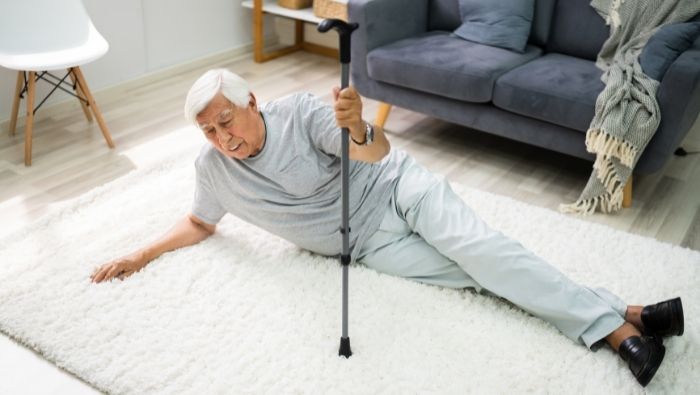The Frugally Safe Home: Precautions and Tips

Many safety precautions in the home are low cost or totally free. These home safety tips will increase the safety level of your home.
When you’re striving for a frugal lifestyle and weighing out household expenditures, safety around the house is not an area where cutting corners pays off.
Hospital statistics show that falls are the leading cause of accidents and injuries in and around the home. These accidents and injuries are not only physically painful, but also they can substantially affect your financial situation in terms of medical bills and possibly an inability to work. Many times, these accidents could have been avoided if a few precautionary measures had been implemented.
Many of the safety precautions that reduce the risk of falls in the home are actually inexpensive or totally free measures. Because houses and lifestyles vary, the following list of suggested safety tips is not all inclusive, but it is a good starting point for increasing the safety level of your home and decreasing the risk of falls or injury.
Consider Throwing Out the Throw Rugs
Throw rugs have a tendency to live up to their name. You should remove all rugs that do not have a slip-proof backing. In situations where you simply can’t part with your decorative but hazardous rugs, you should make the small investment necessary to purchase non-slip rug pads to place under your throw rugs.
Grab Some Grab Bars
Grab bars and non-slip tub and shower bottoms are not just for seniors or for people with physical challenges. They can be an excellent injury preventative for everyone.
Light It Up
Stumbling around in the dark has been the cause of many indoor falls. Nightlights are very inexpensive to purchase and will not make a noticeable difference in your power bill. Place a nightlight in the hallway, kitchen, bathroom, or any other area that you are likely to enter or walk though during the night.
Cut Out the Clutter
Clutter is dangerous. A pet’s toy that is left on the floor can easily cause someone to trip and fall. Magazines are dangerously slippery when stepped on. Clothing scattered on the floor is also a potential hazard.
Simply being aware of specific situations can decrease the danger level of your home. Wipe up spills immediately so that no one slips and falls. When you mop the floors, let everyone in the house know that the floors are wet. Keep mats at each door for wiping wet shoes and boots dry before walking across the room.
Keep Cords Under Control
Electrical cords lying on or across the floor are a potential danger in the home. Zip ties are an inexpensive way to keep electrical cords under control so that someone’s foot does not become entangled in them.
Step It Up
Whenever you need to reach an object on a top shelf, be sure to use a stepstool that is designed for that purpose. A stack of books or upside down trashcan is not a good option. Metal or wooden step stools can be found that cost less than $30. Medical bills from a fall and an injury would certainly be more expensive than that. Plus, you would have the issue of physical pain to deal with.
Take Outside Precautions, Too
Not only is it wise to take measures to assure your safety inside of your home, you should also do whatever you can to reduce the risk of falls outside of your home.
- Install pathway lighting if you have a walkway leading to the entrance of your home.
- If you have steps or a ramp leading to your door, add handrails for extra safety.
- Exterior steps and the surface of a ramp can be slippery when wet. Adding non-slip exterior tape to these areas is a justifiable expense even if the budget is tight.
- Lawn and garden tools and equipment should be stored properly rather than left lying around.
- Ladders should be sturdy. Adding some of the non-slip exterior tape to your ladder is a smart safety measure.
Safety in and around your home should always be a priority even if some other area of the budget must temporarily be trimmed in order to make your home a safe place for everyone living and visiting there. No one wants to experience the pain and expense that comes from an injury, especially when the injury is a result of a potentially preventable accident.
Reviewed March 2024
Sign me up for a comfortable retirement!
Popular Articles
- Comparing Retirement Housing Options
- How We Retired With Almost No Savings
- How Retirees Can Live on a Tight Budget
- 9 Things You Need to Do Before You Retire
- What You Need to Know About Long Term Care Insurance Before You Retire
- You Didn’t Save Enough for Retirement and You’re 55+
- Could Debt Derail Your Retirement? A Checklist
- Your Emergency Fund In Retirement: A Comprehensive Guide
- Managing Your 401k In Your 50s

